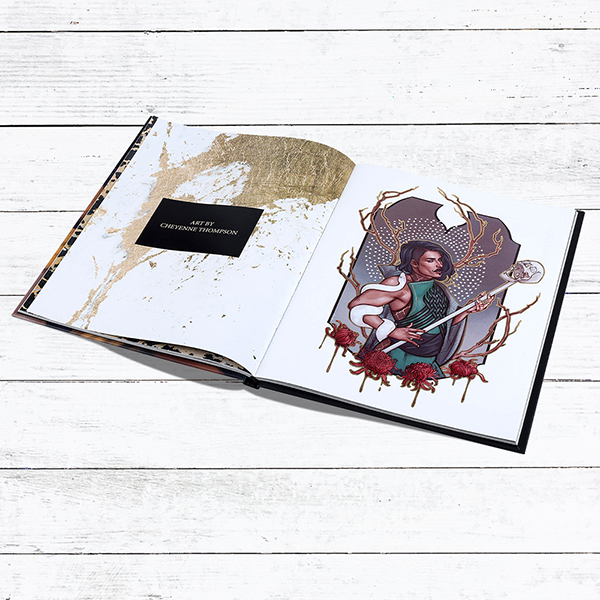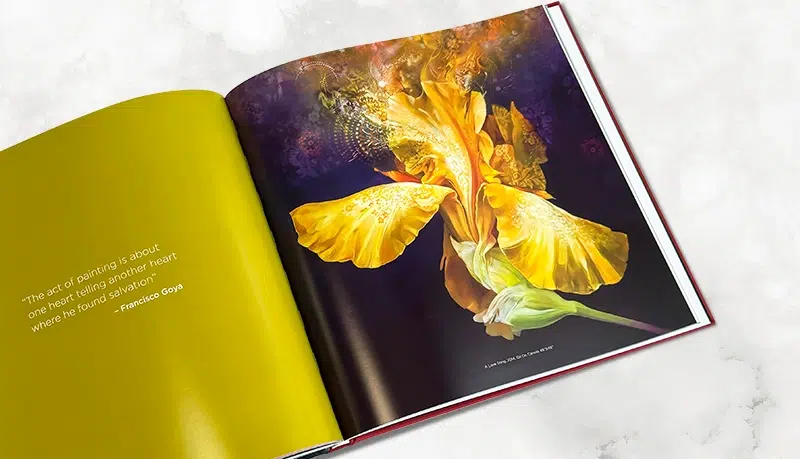Digital or Offset Printing: What's Best for Your art book?
Digital or Offset Printing: What's Best for Your art book?
Blog Article
Comprehending the Process Behind High-Quality Art Book Printing for Art Lovers
When it comes to top quality art book printing, comprehending the ins and outs of the procedure can boost your admiration for the final item. You may not understand just how vital paper option and ink options are to the vibrancy of art work. Each component plays a considerable duty in attaining the preferred impact. As you discover the numerous components of art book printing, you'll discover understandings that might change your point of view on art conservation and discussion.
The Relevance of Paper Option in Art Book Printing
When it comes to art book printing, the choice of paper can make or break the last item. You want your artwork to beam, and the appropriate paper improves shade vibrancy and detail. Consider elements like weight, appearance, and finish; these elements considerably impact exactly how visitors perceive your work.
For example, a heavier supply communicates quality and resilience, while a distinctive coating can include depth to photos. Smooth paper is exceptional for detailed reproductions, allowing great lines and refined tones to show up crisp.
Do not forget the paper's illumination; a brighter sheet can assist colors pop, making your art much more distinctive. You'll likewise desire to consider how the paper communicates with inks and whether it can handle the printing process without buckling or bleed-through. Ultimately, picking the appropriate paper sets the stage for your art, guaranteeing it captures the audience's interest simply as you envisioned.
Choosing the Right Inks for Lively Recreations
Selecting the right inks is just as vital as choosing high quality paper to achieve dynamic reproductions in your art book. When you're publishing art work, you want colors that pop and accurately represent the initial piece. Choose for inks with a high pigment concentration; these often tend to create richer and a lot more saturated shades.
You may consider making use of archival inks, which stand up to fading over time, guaranteeing your art book stays as striking as the day it was printed. If you're functioning with photographs or digitally produced art, pigment-based inks can give a broader color gamut, enhancing detail and deepness.
Do not forget about the surface! Matte and shiny inks can significantly modify the look of your art work, so assume regarding the appearance you're intending to achieve - art book. Inevitably, the ideal ink choice complements your paper option, developing a stunning visual experience for your viewers
The Duty of Color Management in Publish Quality
Shade monitoring plays a necessary duty in accomplishing high print quality for your art book. It ensures that the colors you see on your screen convert precisely to the printed web page. Without reliable shade monitoring, your lively art work might appear boring or altered, threatening your innovative vision.
To begin, adjust your monitor frequently. This action assists keep regular shade representation. Next, utilize color profiles tailored for your printer and paper type. These accounts lead the printer in duplicating colors properly, minimizing discrepancies between digital and printed variations.
When you prepare your files, take into consideration making use of a shade area like Adobe RGB or CMYK, relying on your printer's requirements. Constantly proof your work, too; an examination print can expose any type of prospective color concerns before the last run. By prioritizing shade monitoring, you guard the integrity of your art, assuring your audience experiences it as you meant.

Recognizing Different Binding Methods
Attaining the perfect look for your art book goes past shade administration; binding strategies likewise play a significant duty in its overall presentation and sturdiness. You have several alternatives to evaluate, each with its very own one-of-a-kind attributes.
If you're going for an expert feel, case binding offers a tough option with a hard cover, ideal for showcasing your art work. On the various other hand, best binding offers a flexible spinal column while maintaining prices down, making it a prominent option for softcover publications.
Spiral binding allows your art book to lay flat, which is fantastic for showing pictures without obstruction. On the other hand, saddle stitching is excellent for smaller sized pamphlets, giving a tidy coating without the bulk.
Inevitably, the binding technique you pick should show your creative vision and just how you desire visitors to engage with your work. See to it to weigh these alternatives very carefully to achieve the best outcome for your project.
The Impact of Print Dimension and Layout on Presentation
While the selection of print dimension and go to website design might seem secondary to web content, they substantially influence exactly how your art work is perceived. The dimensions of your prints can either boost or diminish the effect go to this web-site of your items. Larger prints can draw viewers in, allowing them to appreciate elaborate details, while smaller formats might need more intimate interaction.

Conservation Strategies for Durable Art Books
To guarantee your art books stand the examination of time, it's vital to apply effective preservation techniques. Begin by keeping them in an amazing, dry setting, far from direct sunshine and humidity. This prevents fading and warping, maintaining your pages undamaged. Usage acid-free storage boxes or safety sleeves to secure them from dust and physical damages.
When managing your books, constantly clean your hands or use cotton handwear covers to avoid oils and dust transferring onto the web pages. Avoid bending or creasing the spinal columns; rather, make use of book supports when displaying them.
For included protection, think about purchasing archival-quality materials for any kind of repair services or enhancements. Frequently examine your collection for indicators of wear or damage, addressing issues without delay. By following these easy strategies, you can ensure your art books continue to be vibrant and easily accessible for many years to find, preserving their appeal and worth for future generations.
Collaborating With Printers for Ideal Outcomes
When you're prepared to publish your art book, picking the appropriate printer is vital to achieving your vision. Clear interaction regarding your assumptions and requirements will help guarantee that both you and the printer get on the exact same web page. Let's check out just how to make this partnership as seamless and effective as feasible.
Picking the Right Printer

Effective Communication Strategies
Reliable interaction is necessary for turning your art book vision right into reality, specifically when collaborating with printers. art book. Start by clearly describing your job's goals, consisting of design aspects, favored materials, and any specific printing methods. Don't be reluctant to share site web your ideas and referrals; this helps the printer understand your aesthetic
Be open to responses, as printers frequently have important understandings that can enhance your project. This cooperation will certainly assure that your art book fulfills your expectations and radiates in its final type.
Regularly Asked Inquiries
What Are Usual Blunders to Avoid in Art Book Printing?
When publishing your art book, prevent usual blunders like poor resolution pictures, wrong shade profiles, and neglecting page design. Do not fail to remember to check and confirm information to confirm your end product meets your assumptions.
Just How Does Digital Printing Differ From Conventional Printing Approaches?
Digital printing uses digital documents to develop prints directly, enabling for quicker turnaround and modification. On the other hand, conventional approaches include physical plates, which can be taxing and much less adaptable for little runs or special designs.
What Is the Common Turn-around Time for Art Book Printing?
The regular turn-around time for art book printing varies, but you can expect it to take anywhere from a few weeks to numerous months. Aspects like intricacy, quantity, and printing technique all affect this timeline.
Can I Print a Restricted Edition Art Book Financially?
You can publish a restricted version art book economically by choosing cost-effective materials, maximizing print runs, and using digital printing options. Cautious preparation and budgeting will aid you accomplish top quality without overspending.
What Are the Ecological Factors To Consider in Art Book Printing?
When considering art book printing, you must think of eco-friendly materials, lasting inks, and energy-efficient processes (art book). Selecting local printers can additionally reduce your carbon footprint, making your project both lovely and ecologically accountable
Report this page